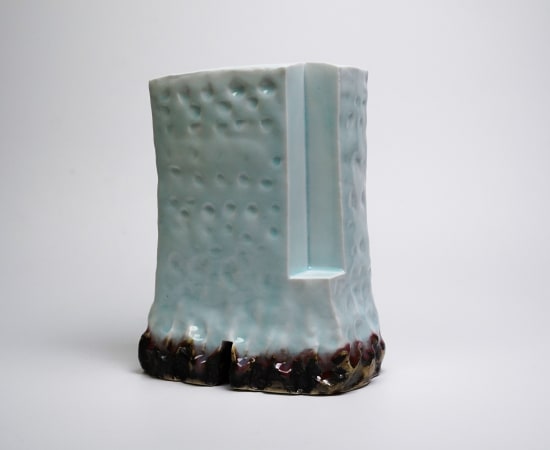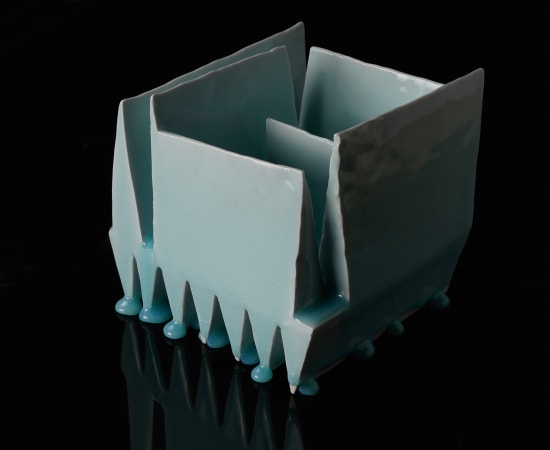If the Song Dynasty's five kilns (Guan ware kiln 官窯, Ge ware kiln 哥窯, Ru ware kiln 汝窯, Ting ware kiln 定窯, and Jun ware kiln 鈞窯) represent the height of Chinese classic porcelain making, contemporary Japanese ceramics enjoy the same national status today within Japan and around the world. The work of Yoshikawa Masamichi (b. 1946) and his contemporaries often make us ask whether contemporary Japanese ceramics might be more expressive and diverse than the Song Dynasty ceramics that inspire today's artists. Famous for his large-scale celadon installations, such as that found at the Nagoya airport entrance, as well as his thick-walled sculptural pieces, Yoshikawa Masamichi has sculpted a meditative piece, inspired by the visual vocabularies of tomb contexts in East Asia. Yoshikawa was intrigued by the tombs of Chinese Emperors that contain vases, sculptures, figures, and even an army like the Terracotta Soldiers in Xi'an.
Yoshigawa's porcelain houses interrogate how an abstract, contemporary sculpture can ask the same questions about life, using Seihakuji (pale blue glaze 青白磁) and Seiji (celadon glaze 青磁) in a deeply human way. Each work is built with blocks of clay, making the tender material express strength and solidity. Yoshikawa then uses glaze to create tension as the eyes move between the different levels of each house. Pudding glaze drips and blue pools cloak each solid house, creating sculptures that look inviting yet haunting.


